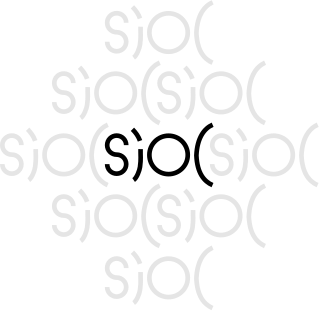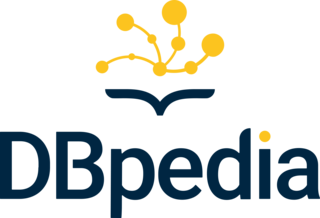The Semantic Web, sometimes known as Web 3.0, is an extension of the World Wide Web through standards set by the World Wide Web Consortium (W3C). The goal of the Semantic Web is to make Internet data machine-readable.
The Resource Description Framework (RDF) is a World Wide Web Consortium (W3C) standard originally designed as a data model for metadata. It has come to be used as a general method for description and exchange of graph data. RDF provides a variety of syntax notations and data serialization formats, with Turtle currently being the most widely used notation.
The Web Ontology Language (OWL) is a family of knowledge representation languages for authoring ontologies. Ontologies are a formal way to describe taxonomies and classification networks, essentially defining the structure of knowledge for various domains: the nouns representing classes of objects and the verbs representing relations between the objects.
RDF Schema (Resource Description Framework Schema, variously abbreviated as RDFS, RDF(S), RDF-S, or RDF/S) is a set of classes with certain properties using the RDF extensible knowledge representation data model, providing basic elements for the description of ontologies. It uses various forms of RDF vocabularies, intended to structure RDF resources. RDF and RDFS can be saved in a triplestore, then one can extract some knowledge from them using a query language, like SPARQL.
SPARQL is an RDF query language—that is, a semantic query language for databases—able to retrieve and manipulate data stored in Resource Description Framework (RDF) format. It was made a standard by the RDF Data Access Working Group (DAWG) of the World Wide Web Consortium, and is recognized as one of the key technologies of the semantic web. On 15 January 2008, SPARQL 1.0 was acknowledged by W3C as an official recommendation, and SPARQL 1.1 in March, 2013.

FOAF is a machine-readable ontology describing persons, their activities and their relations to other people and objects. Anyone can use FOAF to describe themselves. FOAF allows groups of people to describe social networks without the need for a centralised database.
Simple Knowledge Organization System (SKOS) is a W3C recommendation designed for representation of thesauri, classification schemes, taxonomies, subject-heading systems, or any other type of structured controlled vocabulary. SKOS is part of the Semantic Web family of standards built upon RDF and RDFS, and its main objective is to enable easy publication and use of such vocabularies as linked data.

Semantically-Interlinked Online Communities Project is a Semantic Web technology. SIOC provides methods for interconnecting discussion methods such as blogs, forums and mailing lists to each other. It consists of the SIOC ontology, an open-standard machine readable format for expressing the information contained both explicitly and implicitly in Internet discussion methods, of SIOC metadata producers for a number of popular blogging platforms and content management systems, and of storage and browsing/searching systems for leveraging this SIOC data.

In computing, linked data is structured data which is interlinked with other data so it becomes more useful through semantic queries. It builds upon standard Web technologies such as HTTP, RDF and URIs, but rather than using them to serve web pages only for human readers, it extends them to share information in a way that can be read automatically by computers. Part of the vision of linked data is for the Internet to become a global database.

DBpedia is a project aiming to extract structured content from the information created in the Wikipedia project. This structured information is made available on the World Wide Web. DBpedia allows users to semantically query relationships and properties of Wikipedia resources, including links to other related datasets.
JSON-LD is a method of encoding linked data using JSON. One goal for JSON-LD was to require as little effort as possible from developers to transform their existing JSON to JSON-LD. JSON-LD allows data to be serialized in a way that is similar to traditional JSON. It was initially developed by the JSON for Linking Data Community Group before being transferred to the RDF Working Group for review, improvement, and standardization, and is currently maintained by the JSON-LD Working Group. JSON-LD is a World Wide Web Consortium Recommendation.
GeoSPARQL is a standard for representation and querying of geospatial linked data for the Semantic Web from the Open Geospatial Consortium (OGC). The definition of a small ontology based on well-understood OGC standards is intended to provide a standardized exchange basis for geospatial RDF data which can support both qualitative and quantitative spatial reasoning and querying with the SPARQL database query language.
Data Catalog Vocabulary (DCAT) is an RDF vocabulary designed to facilitate interoperability between data catalogs published on the Web. By using DCAT to describe datasets in catalogs, publishers increase discoverability and enable applications to consume metadata from multiple catalogs. It enables decentralized publishing of catalogs and facilitates federated dataset search across catalogs. Aggregated DCAT metadata can serve as a manifest file to facilitate digital preservation.
The LC Linked Data Service is an initiative of the Library of Congress that publishes authority data as linked data. It is commonly referred to by its URI: id.loc.gov.
In natural language processing, linguistics, and neighboring fields, Linguistic Linked Open Data (LLOD) describes a method and an interdisciplinary community concerned with creating, sharing, and (re-)using language resources in accordance with Linked Data principles. The Linguistic Linked Open Data Cloud was conceived and is being maintained by the Open Linguistics Working Group (OWLG) of the Open Knowledge Foundation, but has been a point of focal activity for several W3C community groups, research projects, and infrastructure efforts since then.
Schema-agnostic databases or vocabulary-independent databases aim at supporting users to be abstracted from the representation of the data, supporting the automatic semantic matching between queries and databases. Schema-agnosticism is the property of a database of mapping a query issued with the user terminology and structure, automatically mapping it to the dataset vocabulary.
Linked Data Notifications (LDN) is a W3C Recommendation that describes a communications protocol based on HTTP, URI, and RDF on how servers (receivers) can receive messages pushed to them by applications (senders), as well as how other applications (consumers) may retrieve those messages. Any web resource can advertise a receiving endpoint (inbox) for notification messages. Messages are expressed in RDF, and can contain arbitrary data.

In knowledge representation and reasoning, knowledge graph is a knowledge base that uses a graph-structured data model or topology to integrate data. Knowledge graphs are often used to store interlinked descriptions of entities – objects, events, situations or abstract concepts – while also encoding the semantics underlying the used terminology.
Datacommons.org is an open knowledge repository hosted by Google that provides a unified view across multiple public datasets, combining economic, scientific and other open datasets into an integrated data graph. The Datacommons.org site was launched in May 2018 with an initial dataset consisting of fact-checking data published in Schema.org "ClaimReview" format by several fact checkers from the International Fact-Checking Network. Google has worked with partners including the United States Census, the World Bank, and US Bureau of Labor Statistics to populate the repository, which also hosts data from Wikipedia, the National Oceanic and Atmospheric Administration and the Federal Bureau of Investigation. The service expanded during 2019 to include an RDF-style Knowledge Graph populated from a number of largely statistical open datasets. The service was announced to a wider audience in 2019. In 2020 the service improved its coverage of non-US datasets, while also increasing its coverage of bioinformatics and coronavirus.




